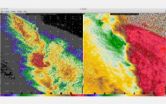(Press-News.org) Researchers at North Carolina State University have created the first coils of silicon nanowire on a substrate that can be stretched to more than double their original length, moving us closer to incorporating stretchable electronic devices into clothing, implantable health-monitoring devices, and a host of other applications.
"In order to create stretchable electronics, you need to put electronics on a stretchable substrate, but electronic materials themselves tend to be rigid and fragile," says Dr. Yong Zhu, one of the researchers who created the new nanowire coils and an assistant professor of mechanical and aerospace engineering at NC State. "Our idea was to create electronic materials that can be tailored into coils to improve their stretchability without harming the electric functionality of the materials."
Other researchers have experimented with "buckling" electronic materials into wavy shapes, which can stretch much like the bellows of an accordion. However, Zhu says, the maximum strains for wavy structures occur at localized positions – the peaks and valleys ¬– on the waves. As soon as the failure strain is reached at one of the localized positions, the entire structure fails.
"An ideal shape to accommodate large deformation would lead to a uniform strain distribution along the entire length of the structure –¬ a coil spring is one such ideal shape," Zhu says. "As a result, the wavy materials cannot come close to the coils' degree of stretchability." Zhu notes that the coil shape is energetically favorable only for one-dimensional structures, such as wires.
Zhu's team put a rubber substrate under strain and used very specific levels of ultraviolet radiation and ozone to change its mechanical properties, and then placed silicon nanowires on top of the substrate. The nanowires formed coils upon release of the strain. Other researchers have been able to create coils using freestanding nanowires, but have so far been unable to directly integrate those coils on a stretchable substrate.
While the new coils' mechanical properties allow them to be stretched an additional 104 percent beyond their original length, their electric performance cannot hold reliably to such a large range, possibly due to factors like contact resistance change or electrode failure, Zhu says. "We are working to improve the reliability of the electrical performance when the coils are stretched to the limit of their mechanical stretchability, which is likely well beyond 100 percent, according to our analysis."
INFORMATION:
A paper describing the research, "Controlled 3D Buckling of Silicon Nanowires for Stretchable Electronics," was published online Dec. 28 by ACS Nano. The paper is co-authored by Zhu, NC State Ph.D. student Feng Xu and Wei Lu, an assistant professor at the University of Michigan. The research was funded by the National Science Foundation.
Coiled nanowires may hold key to stretchable electronics
2011-01-12
ELSE PRESS RELEASES FROM THIS DATE:
UBC researchers part of Planck satellite team that uncovers secrets of the universe
2011-01-12
University of British Columbia researchers are part of European Space Agency's Plank satellite mission that is revealing thousands of "exotic" astronomical objects, including extremely cold dust clouds, galaxies with powerful nuclei, and giant clusters of galaxies.
The international collaboration of scientists from 15 countries is presenting more than 25 scientific papers today in Paris, France, on the first results from the Planck mission. Launched in 2009, the Planck satellite is probing the entire sky at microwave wavelengths from 0.35 millimetre to one centimetre. ...
Gene helps plants use less water without biomass loss
2011-01-12
WEST LAFAYETTE, Ind. - Purdue University researchers have found a genetic mutation that allows a plant to better endure drought without losing biomass, a discovery that could reduce the amount of water required for growing plants and help plants survive and thrive in adverse conditions.
Plants can naturally control the opening and closing of stomata, pores that take in carbon dioxide and release water. During drought conditions, a plant might close its stomata to conserve water. By doing so, however, the plant also reduces the amount of carbon dioxide it can take in, ...
Inside a snowstorm: Scientists obtain close-up look at Old Man Winter
2011-01-12
In this winter of heavy snows--with more on the way this week--nature's bull's-eye might be Oswego, N.Y., and the nearby Tug Hill Plateau.
There the proximity of the Great Lakes whips wind and snow into high gear. Old Man Winter then blows across New York state, burying cities and towns in snowdrifts several feet high. This season, however, something is standing in his way.
The Doppler-on-Wheels (DOW), a data-collecting radar dish, is waiting. This month and next, scientists inside the DOW are tracking snowstorms in and around Oswego to learn what drives lake-effect ...
UCSD engineers give solar power a boost
2011-01-12
The growing popularity of solar photovoltaic (PV) systems across the United States has made it more important to maximize their power input. That's why UC San Diego environmental engineering professor Jan Kleissl is working on technologies and methods that will better predict how much power we can actually harness from the sun.
In a paper recently published in the journal Renewable Energy (http://www.sciencedirect.com/science/journal/09601481), "Optimum fixed orientations and benefits of tracking for capturing solar radiation in the continental United States," Kleissl ...
Researchers show environmental changes may affect vital cooperate bird behaviors
2011-01-12
New York, Jan. 11, 2011 -- While scientists believe that climate change and related extreme weather events such as drought and flooding will likely affect the earth's flora and fauna, just how much is not known. A new study by researchers Walter Jetz from Yale University and Dustin Rubenstein from Columbia University however shows an important link between the natural variation in climate conditions and complex behaviors among birds.
The study, which appears in print in Current Biology on Jan. 11, 2011, has implications for understanding how organisms may respond behaviorally ...
Feast or famine: Researchers identify leptin receptor's sidekick as a target for appetite regulation
2011-01-12
JACKSONVILLE, Fla. — A study by researchers at Mayo Clinic's campus in Florida and Washington University School of Medicine adds a new twist to the body of evidence suggesting human obesity is due in part to genetic factors. While studying hormone receptors in laboratory mice, neuroscientists identified a new molecular player responsible for the regulation of appetite and metabolism.
In the Jan. 11 online issue of PLoS Biology, the authors report that mice engineered not to express the lipoprotein receptor LRP1, in the brain's hypothalamus, began to eat uncontrollably, ...
Winter temperatures play complex role in triggering spring budburst
2011-01-12
The opening of buds on Douglas-fir trees each spring is the result of a complex interplay between cold and warm temperatures during the winter, scientists with the U.S. Forest Service's Pacific Northwest Research Station have found.
Their research—which is featured in the December issue of Science Findings, a monthly publication of the station—led to the development of a novel model to help managers predict budburst under different scenarios of future climate.
"We take it for granted that buds will open each spring, but, in spite of a lot of research on winter dormancy ...
10-year roadmap for reaching public health education goals
2011-01-12
San Diego, CA, January 11, 2011 – Launched on December 2, 2010, Healthy People 2020 is an ambitious, science-based, 10-year agenda for improving the health of all Americans. A key component, Education for Health, is an educational roadmap to achieve the Healthy People 2020 goals. Formulated by the Healthy People Curriculum Task Force, this set of new and revised educational objectives provides a vehicle for promoting the discussion and progress that will be needed to achieve an integrated, seamless approach to education for health for the American public as well as for ...
Technique allows researchers to identify key maize genes for increased yield
2011-01-12
ITHACA, N.Y. — Scientists have identified the genes related to leaf angle in corn (maize) – a key trait for planting crops closer together, which has led to an eight-fold increase in yield since the early 1900s. (Nature Genetics, Jan. 9, 2011.)
The study, led by researchers from Cornell and the U.S. Department of Agriculture – Agricultural Research Service (USDA-ARS) at Cornell and North Carolina State University, is the first to relate genetic variation across the entire maize genome to traits in a genomewide association study. The researchers have so far located 1.6 ...
Link between fracture prevention and treatment adherence not fully understood by patients
2011-01-12
Newly released findings of a multinational survey conducted on behalf of the International Osteoporosis Foundation (IOF) show clear disparities between patients' and doctors' perceptions of osteoporosis and its management.
The 13-country survey of 844 postmenopausal patients over 55 years of age and 837 doctors investigated gaps between patient and doctor understanding of the emotional and physical impact of osteoporosis; identified barriers to patient adherence; and sought to understand the ways in which osteoporotic patients can better share and obtain information about ...



